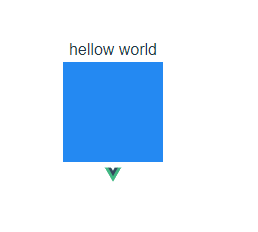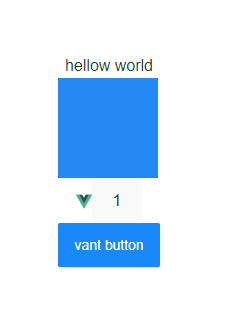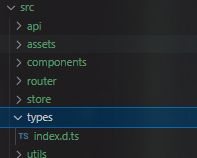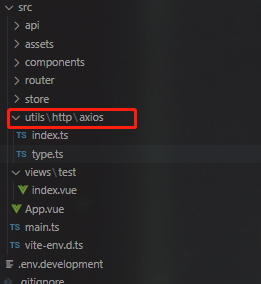手把手,完整的從0搭建vite-vue3-ts專案框架:設定less+svg+pinia+vant+axios
專案同步git:https://gitee.com/lixin_ajax/vue3-vite-ts-pinia-vant-less.git
覺得有幫助的小夥伴請點下小心心哦
為避免贅述,過於基礎的點會直接省略或貼圖,比如建立資料夾/檔案的路徑/路由一類
設定相應功能,也儘量只貼相關程式碼,並不代表整個檔案內容
我會盡量把每一步都記錄下來,讓跟隨檔案操作的朋友也能還原專案
專案不盡完美,但是主體功能應該都可以有所參考
一.本地初始環境

SvgIcon元件
// SvgIcon/index.vue
<template>
<svg aria-hidden="true" class="svg-icon">
<use :xlink:href="symbolId" :fill="color" />
</svg>
</template>
<script lang="ts" setup>
import { computed } from "vue";
const props = defineProps({
prefix: {
type: String,
default: "icon",
},
name: {
type: String,
required: true,
},
color: {
type: String,
default: "#333",
},
});
const symbolId = computed(() => `#${props.prefix}-${props.name}`);
</script>
<style lang="less" scoped>
.svg-icon {
width: 1em;
height: 1em;
fill: v-bind(color);
vertical-align: middle;
color: v-bind(color);
}
</style>
在main.ts中註冊SvgIcon為全域性元件
// main.ts
import { createApp } from 'vue'
import './style.css'
import "virtual:svg-icons-register";
import SvgIcon from "@/components/SvgIcon/index.vue";
import App from './App.vue'
import router from "./router";
const app = createApp(App as any);
app.use(router)
app.mount('#app')
app.component("SvgIcon", SvgIcon);
在test/index.vue中引入元件
// test/index.vue
<svg-icon name="test-vue" />
檢視頁面,測試是否成功

頁面顯示svg圖示,svg元件設定成功!
九.設定pinia
pinia: 類似vuex的倉庫
pinia-use-persist: 持久加密快取pinia資料
yarn add pinia pinia-use-persist -S
main.ts中引入pinia
// main.ts
import { createApp } from 'vue'
import { createPinia } from 'pinia'
import { usePersist } from 'pinia-use-persist'
import App from './App.vue'
const app = createApp(App as any);
const pinia = createPinia()
pinia.use(usePersist)
app.use(pinia)
src下建立store目錄存放相關檔案

/store/modules下存放專案不同模組需要通過pinia通訊的資料,假裝專案有一個test模組,存放了一個資料number
// store/modules/test/index.ts
import { defineStore } from "pinia";
interface stateType {
number: number;
}
const useTestStore = defineStore("user", {
state: (): stateType => ({
number: 0,
}),
getters: {},
actions: {
setNumber(number: number): void {
this.number = number;
},
},
persist: {
enabled: true,
encryptionKey: "vueTest",
},
});
export { useTestStore };
store/index.ts引入各模組
// store/index.ts
import { createPinia } from "pinia";
import { useTestStore } from "./modules/test";
const pinia = createPinia();
export { useTestStore };
export default pinia;
回到test/index.vue,測試pinia設定是否成功
// test/index.vue
<template>
<!-- 測試pinia -->
<button @click="number += 1">{{ number }}</button>
</div>
</template>
<script setup lang="ts">
import { computed } from 'vue'
import { useTestStore } from '@/store'
const store = useTestStore()
const number = computed<number>({
get() {
return store.number
},
set(value) {
store.setNumber(value)
},
})
</script>
點選按鈕,重新整理後檢視頁面是否變化

頁面資料沒有初始化,pinia設定成功!
十.設定vant ui
vant ui:https://vant-contrib.gitee.io/vant/v4/
yarn add vant
這裡再推薦一個外掛,unplugin-vue-components【自動引入】,引入ui可以省去很多麻煩
yarn add unplugin-vue-components -D
vite.config.ts中引入vant ui
// vite.config.ts
import vue from '@vitejs/plugin-vue';
import Components from 'unplugin-vue-components/vite';
import { VantResolver } from 'unplugin-vue-components/resolvers';
export default {
plugins: [
vue(),
Components({
resolvers: [VantResolver()],
}),
],
};
回到test/index.vue測試vant ui引入是否成功
// test/index.vue
<!-- 測試vant ui -->
<div>
<van-button type="primary">vant button</van-button>
</div>
重新整理頁面檢視

按鈕有樣式,vant ui引入成功!
但是官方描述:Vant 中有個別元件是以函數的形式提供的,包括 Toast,Dialog,Notify 和 ImagePreview 元件。在使用函陣列件時,unplugin-vue-components 無法自動引入對應的樣式,因此需要手動引入樣式。
所以,這幾個元件需要使用的話需要在main.ts中引入樣式
// main.ts
// Toast
import 'vant/es/toast/style';
// Dialog
import 'vant/es/dialog/style';
// Notify
import 'vant/es/notify/style';
// ImagePreview
import 'vant/es/image-preview/style';
回到test/index.vue測試,範例toast
// test/index.vue
import { Toast } from 'vant'
Toast('使用vant')
檢視頁面

toast有樣式,vant ui引入成功!
但是,使用vant ui多是行動端,所以還要做行動端做以下適配
參考: https://vant-contrib.gitee.io/vant/v4/
1.適配安全距離
根據vant ui提供,在根檔案index.html修改
// index.html
<!-- 在 head 標籤中新增 meta 標籤,並設定 viewport-fit=cover 值 -->
<meta name="viewport"
content="width=device-width, initial-scale=1.0, maximum-scale=1.0, minimum-scale=1.0, viewport-fit=cover" />
<!-- 開啟頂部安全區適配 -->
<van-nav-bar safe-area-inset-top />
<!-- 開啟底部安全區適配 -->
<van-number-keyboard safe-area-inset-bottom />
2.Viewport 佈局
postcss-px-to-viewport-8-plugin:postcss-px-to-viewport-8-plugin 是一款 PostCSS 外掛,用於將 px 單位轉化為 vw/vh 單位。
yarn add postcss-px-to-viewport-8-plugin -D
vite.config.ts中更改設定
// vite.config.ts
import pxtovw from 'postcss-px-to-viewport-8-plugin'
const loder_pxtovw = pxtovw({
//這裡是設計稿寬度 自己修改
viewportWidth: 375,
viewportUnit: 'vw'
})
export default defineConfig({
......,
css: {
postcss: {
plugins: [loder_pxtovw]
}
}
})
建立一個types/index.d.ts,用於處理包括postcss-px-to-viewport-8-plugin一類的沒有宣告檔案的依賴

// src/types/index.d.ts
declare module "postcss-px-to-viewport-8-plugin"
重新整理頁面,F12檢視樣式

px已被轉換,vant ui 及 行動端設定成功!
十一.設定axios
yarn add axios
tsconfig.json:types里加上"vite/client"
// tsconfig.json
{
"compilerOptions": {
......,
"types": ["vite/client", "vite-plugin-svg-icons/client"]
},
"include": [
"src/**/*.ts",
"src/**/*.d.ts",
"src/**/*.tsx",
"src/**/*.vue",
"*.ts",
],
"exclude": ["node_modules", "dist"],
"references": [{ "path": "./tsconfig.node.json" }]
}
src下建立axios請求檔案

建立axios
// utils/http/axios/index.ts
import axios, {
AxiosInstance,
AxiosRequestConfig,
AxiosResponse,
AxiosError,
} from "axios";
import { IResponse } from "./type";
// 如果請求超過 `timeout` 的時間,請求將被中斷
axios.defaults.timeout = 5000;
const axiosInstance: AxiosInstance = axios.create({
baseURL: import.meta.env.VITE_APP_API_BASEURL + "",
});
// axios範例攔截請求
axiosInstance.interceptors.request.use(
(config: AxiosRequestConfig) => {
// 設定headers
config.headers = {
...config.headers,
};
return config;
},
(error: any) => {
return Promise.reject(error);
}
);
// axios範例攔截響應
axiosInstance.interceptors.response.use(
// 請求成功
(response: AxiosResponse) => {
return response;
},
// 請求失敗
(error: AxiosError) => {
const { response } = error;
console.error(response, "response error");
if (response) {
return Promise.reject(response.data);
}
}
);
const request = <T = any>(config: AxiosRequestConfig): Promise<T> => {
const conf = config;
return new Promise((resolve) => {
axiosInstance
.request<any, AxiosResponse<IResponse>>(conf)
.then((res: AxiosResponse<IResponse>) => {
const {
data: { result },
} = res;
resolve(result as T);
});
});
};
export function get<T = any>(config: AxiosRequestConfig): Promise<T> {
return request({ ...config, method: "GET" });
}
export function post<T = any>(config: AxiosRequestConfig): Promise<T> {
return request({ ...config, method: "POST" });
}
export default request;
export type { AxiosInstance, AxiosResponse };
// utils/http/axios/type.ts
export interface RequestOptions {
// Whether to process the request result
isTransformResponse?: boolean;
}
// 返回res.data的interface
export interface IResponse<T = any> {
code: number | string;
result: T;
data: T;
message: string;
status: string | number;
}
根目錄建立.env.development設定開發請求地址
// .env.development
# 開發環境
VITE_APP_API_BASEURL = 你的請求地址
NODE_ENV = development
vite.config.ts設定server
// vite.config.ts
server: {
hmr: { overlay: false }, // 禁用或設定 HMR 連線 設定 server.hmr.overlay 為 false 可以禁用伺服器錯誤遮罩層
// 服務設定
port: 3030, // 型別: number 指定伺服器埠;
open: false, // 型別: boolean | string在伺服器啟動時自動在瀏覽器中開啟應用程式;
cors: false, // 型別: boolean | CorsOptions 為開發伺服器設定 CORS。預設啟用並允許任何源
host: "0.0.0.0", // IP設定,支援從IP啟動
["/api"]: {
target: process.env.VITE_APP_API_BASEURL,
changeOrigin: true,
rewrite: (path: string) => path.replace(new RegExp("^/api"), ""),
},
},
建立api存放目錄

建立一個api
// api/test/index.ts
import { post } from "@/utils/http/axios";
import { IResponse } from "@/utils/http/axios/type";
export interface LoginData {
username?: string;
password?: string;
}
enum URL {
login = "/api/user_center/testLogin",
}
/**
* @description: 使用者登入
* @params {LoginData} params
* @return {Promise}
*/
const login = async (data: LoginData) =>
post<IResponse>({ url: URL.login, data });
export { login };
回到test/index.vue呼叫api測試axios
// test/index.vue
<script setup lang="ts">
import { login } from '@/api/test'
login({})
</script>
回到頁面,檢視network

介面請求成功,axios設定成功!
最後,設定一下打包
// vite.config.ts
import { UserConfig, ConfigEnv, loadEnv } from "vite";
// https://vitejs.dev/config/
export default ({ command, mode }: ConfigEnv): UserConfig => {
const env = loadEnv(mode, __dirname);
return {
base: env.NODE_ENV === "development" ? "/" : "./",
build: {
outDir: "dist",
assetsDir: "assets", //指定靜態資源存放路徑
sourcemap: false, //是否構建source map 檔案
},
};
};
啟動dist,沒問題!

結語:
專案到此主體功能就已經設定完畢了,細節之處大家多多檢視官網和眾多網友的分享
專案還有很多不完善甚至錯誤的地方,踩坑還會繼續,後續有時間還會繼續優化,實際使用中還有很多地方需要改進
專案同步git:https://gitee.com/lixin_ajax/vue3-vite-ts-pinia-vant-less.git